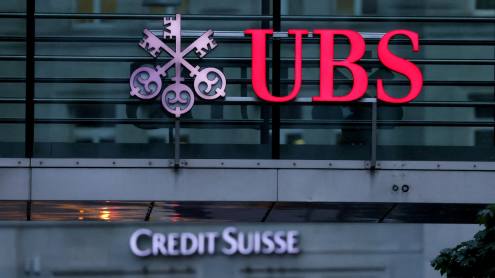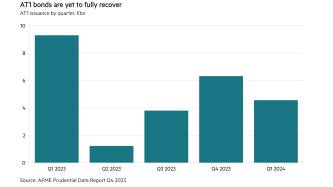In 150 hectares of landscaped parkland sits the most technologically sophisticated bank headquarters in Europe. Ciudad Grupo Santander at Boadilla del Monte, 15km west of central Madrid, was decreed by Emilio Botín, chairman of Grupo Santander, as a command centre befitting the eurozone’s biggest bank. The €550m complex boasts a huge dome crowning the main building with the biggest glass skylight ever built in Spain.
Santander Group City, where 6700 employees work in nine office buildings, is a monument to the vision of Mr Botín, who, largely through a series of bold acquisitions, has transformed Santander into the leading bank both in Spain and Latin America.
Following in the footsteps of his father and grandfather, who were both chairmen of Santander, he sees the group taking its place among the world’s top 10 banks and the new Madrid complex is designed to reflect the group’s global prestige.
“More than just a headquarters, it shows that as a group we are modern, international and a leader,” says Mr Botín.
Ciudad Grupo Santander also embodies the cost synergies that have contributed so much to the performance of Spanish banks following the wave of mergers and acquisitions that transformed the sector in the 1990s.
After the merger of Banco Santander and Banco Central Hispano in 1999, the group was spread out across 23 separate office buildings in central Madrid. The sale of most of those buildings raised €1bn – and the €500bn in capital gains from the sales almost covered the cost of the new complex. The group will also be saving €21m a year in rent.
The efficiency benefits of the new headquarters are no less substantial. A total of €100m has been invested in cutting-edge communications, including high-speed networks, twin data processing centres and 6700 workstations with flat-screen monitors.
Employees, who can take 17 company bus services to the complex, have Spain’s largest company crèche at their disposal as well as a training centre (with on-site residences for 170 people), five restaurants, tennis courts, a gym, a swimming pool and, of course, an executive golf course. Described by some critics as extravagant, it is a head office in harmony with Santander’s achievements and ambitions.
It seems appropriate that the showpiece of Spanish banking should be a piece of real estate. The Spanish property boom that began in 1997 has been by far the main source of income for the country’s retail banking sector. Over those eight years, non-corporate bank lending – overwhelmingly mortgage loans – has been growing at close to or above 20% a year.
Mortgage lending up
In 2004, Spain accounted for 20% of all new mortgage loans granted in the EU, raising its share of total EU mortgage lending to 12.2%, up five percentage points from 1999. Corporate lending is also dominated by real estate. Last year, almost 70% of lending to non-financial companies went to construction or property development groups.
The scale and duration of the property explosion has raised concerns, particularly over the possible overheating of house prices, which have increased by an average of almost 150% since 1997. “The longer the upward trend persists, the more difficult it will be for an orderly absorption of excess prices,” warns Jaime Carauna, governor of the central bank.
But rather than a bubble about to burst, bankers see the real estate boom as a structural adjustment to a shortfall. “There are structural factors driving the growth of the housing market that indicate we are not dealing with a speculative bubble,” says Alejandra Kindelán, chief economist with the Santander group. “Interest rates have been low for some time, employment growth is strong and there has also been a big influx of immigrants into Spain.”
Social changes
Important social changes are also contributing to the boom. “Six or seven years ago, we used to make jokes in Spain about children growing up but never leaving home,” says Julio López, head of retail banking with Banco Bilbao Vizcaya Argentaria (BBVA), the country’s second largest bank. “You don’t hear them anymore because young people can now afford to buy their own place to live.” Single-parent homes are also on the increase as the divorce rate rises.
Julio López, head of retail banking at BBVA
In addition, Britons, Germans and other foreigners are estimated to be buying up to 100,000 homes a year in Spain, attracted not only by the Mediterranean lifestyle and climate but also by highly competitive interest rates.
“Spain has an exceptionally efficient financial system,” says an adviser to the secretary of state for economic affairs. “Banks here offer the best conditions for buying homes in the whole of Europe. Interest rates for mortgages are about 25 basis points below what is available in Germany.”
Tough competition for mortgage business has also seen the average terms from loans increase to 22 years, up from 15 years five years ago. Terms are expected to be extended further towards 25 and 30 years, although, in a climate of strong competitive pressure on net interest margins, bankers see bigger benefits in terms of 22 years or less.
Lending with care
Careful positioning in the mortgage market also helps explain why Spanish banks post some of the lowest non-performing loan ratios in the world. “We don’t compete on the ‘golden mile’,” says BBVA’s Mr López. “The average mortgage we provide is for €120,000. If interest rates go up, the extra payment required of a family is small.”
Partly as a result of this positioning strategy, BBVA has a non-performing loan ratio of 0.6% for its retail banking operations in Spain, laying claim to being Europe’s most efficient bank in this area.
Although there are solid economic and social reasons for the property boom, banks are already working on alternative sources of income to offset an inevitable slowdown in the growth of mortgage lending.
“Spain has been building about 600,000 new homes a year to make up for a structural deficit in housing,” says Mr López. “Growth of that magnitude is not sustainable. As the catching-up process nears completion, we expect the market to fall back to a natural level of about 450,000 new homes a year.”
Banks are increasingly focusing their attention on small and medium-sized enterprises (SMEs) and, in particular, micro businesses, as a source of new revenue. In Spain, as in most European countries, small firms dominate the economy, accounting for 80% of GDP. But to date, the way most Spanish banks approach them has not been especially friendly or specialised.
The potential for growth is strong. “BBVA has about 800,000 micro businesses as customers, but only about 13% of them borrow money from us,” says Mr López. “If, for example, you ask a small lawyers’ office who they are leasing their computers, photocopier or cars from, the answer is not usually a bank. There are huge opportunities in the micro business segment and the competition is not as strong as it is for SME customers.”
Micro business growth
Banco Popular Español, Spain’s fifth largest bank by assets, has been focusing on micro firms and SMEs for several years. Over the past year, its non-mortgage business has grown by about 20%, compared with about 13% for commercial banks as a whole.
Between 45% and 53% of Popular’s total revenue is generated by corporate banking, with micro businesses accounting for about two-thirds of that amount and SMEs for most of the rest.
This focus on small companies is regarded as retail banking in Spain. “The two big universal banks are very retail-oriented, but we are even more retail than they are,” says Roberto Higuera, Popular’s chief financial officer.
Popular, Spain’s most successful bank in terms of profits on average capital, has been particularly strong in providing short-term loans as working capital to help small firms bridge gaps between payables and receivables. Its 11.5% market share in this area is double the bank’s natural market share.
“The key is to become the dominant provider,” says Juan Echanojáuregui, Popular’s head of investor relations. “If a small firm needs 10 banking products and you can capture six, you are well placed to generate a strong revenue stream and prevent poaching by other banks.”
Popular is opening new branches to capture more SME customers; it launched 50 in 2004 and plans more for this year. The new branches have an extremely light structure with only two or three employees each, compared with an average of 5.3 for the group’s network as a whole.
Industrial estates
“Our new branches are being carefully positioned in industrial estates and other areas where there has been a build-up of SMEs,” says Mr Higuera. “This means we can reach break-even point and move up to group profitability levels very fast, perhaps within 18 months, compared with three or four years for a typical residential area or high street branch.”
Spain has by far the densest banking network in Europe, with just under 1000 branches per one million inhabitants. This is almost double the level in Italy, the next most heavily banked country, and compares with fewer than 250 branches per one million inhabitants in the US, the Netherlands, Ireland, Sweden and the UK. However, Spanish branches are also among the smallest in Europe, with average assets of €36m per branch against an EU average of €122m.
Branches continue to reign supreme as sales channels. Big investments in sophisticated IT platforms have enabled banks to shift the majority of transactions to ATMS, the internet and telephone banking. But the overwhelming majority of Spaniards prefer to buy their financial products face-to-face.
BBVA, whose internet services have been rated the best in Europe by AQmetrix, an independent rating company for on-line financial services, has automated more than 70% of transactions. However, Mr López says: “Ninety-eight per cent of sales are still made at the branch level.”
Conservative borrowers
As well as a fondness for the social interaction of traditional branches, Spaniards tend to adopt a conservative approach to consumer borrowing. “Spaniards will take out a loan to buy a house but overall they are debt-averse,” says Mr López. “They are significantly different for many other Europeans in that they don’t like borrowing to spend.”
This is gradually beginning to change. Car sales, for example, have reached record levels this year. In the context of a buoyant economy and strong employment growth, banks are also turning to consumer finance as another alternative to mortgage lending.
BBVA, for example, succeeded in switching 600,000 customers from debit to revolving credit cards last year through an aggressive marketing campaign involving 10% rebates on restaurant and petrol station purchases.
The average annual level of revolving credit borrowing in Spain is currently about €1400 per card, half the European average and only about a quarter of the level in the UK. For banks, this gap is seen as an important opportunity for growth.











